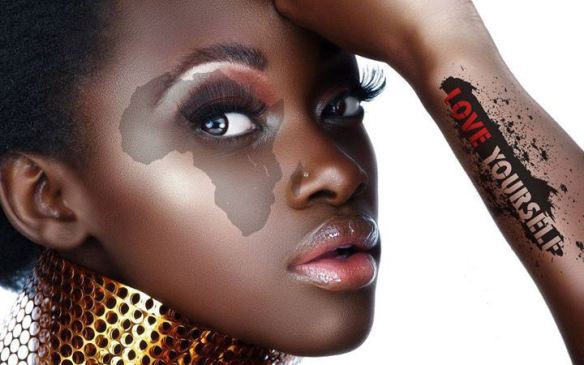[Today’s post is based off the Zero to Hero Challenge, Day 16 “Make a Prompt Personal.” Since I wasn’t inspired by the actual Daily Prompt for the day I will use the example given in the Zero to Hero article which is, Two plus two equals four: yes or no? I will develop a personal interpretation of this prompt and create my post based off my blog’s theme.]
When I read this prompt, my thoughts immediately went towards the concept of how an idea can multiply and become normalized once one or two people believe it, start to promote it, and influence others. Their ideas go from two people believing it, to four, six, eight, ten…until it becomes a part of our cultural fabric. Depending on the goal of those ideas, it can have either a positive or a negative outcome.
Part of why I started the blog Honoring Our HAIRitage was to fight against the idea that African American’s hair texture was ugly, unsightly, unmanageable, and somehow wrong. I chose the name to counter those ideas and instead honor our natural textures. Those negative ideas about African textured hair started many years ago and spread by those with influence to become the predominate opinion of today. They started out with a small group of people, which multiplied into many. This was done in a variety of ways. A historical quote by Martin Freeman in an 1859 article in the Anglo-African Magazine gives one such example based off the socialization process of young children:
“The child is taught directly or indirectly that he or she is pretty, just in proportion as the features approximate the Anglo-Saxon standard. Hence…kinky hair must be subjected to a straightening process-oiled, and pulled, twisted up, tied down, sleeked over and pressed under, or cut off so short that it can’t curl, sometimes the natural hair is shaved off and it’s place supplied by a straight wig.”
Things have not changed much since 1859. Freeman made this quote with the individual in mind, but it also takes structural racism to create ideas that weave themselves into the fabric of our culture and become normalized. Examples of structural racism include hair discrimination in the workplace, school systems, and most recently in the military, which labels African textured hair as “unprofessional,” “against the dress code,” or “a safety hazard.”
Overcoming internalized oppression and structural racism can be hard to do. However, William J. Wilson, gives us a way to triumph over them by writing in the 1853, Frederick Douglass’ Paper:
“We must begin to tell our own story, write our own lecture, paint our own picture, chisel our own bust, acknowledge, and love our own peculiarities.”
Honoring Our HAIRitage is my platform to tell our own story, re-frame those negative messages, and spread a more positive affirming understanding of African American beauty by starting with understanding our history. I want other women and men of color to know that you are beautiful, you are worthy, you are perfect, just the way you are! We can start with just a few of us, and together, multiply into many.
Don’t forget to Subscribe to never miss a post!
Follow me on Facebook and Twitter
Feel free to Like, Comment, or Share below!!


That’s right! Thanks for sharing this. It’s true that you should love and embrace yourself first before you expect others to do that… If they see how happy you are, they will also think positively about you…
LikeLiked by 1 person
I completely agree! Sometimes, it takes examples of other people who look like you, and are confident with themselves to know that you can be also. Looking back, that is what I needed in many situations. I’m glad it resonated with you!
LikeLike
I love this post.
LikeLike
That’s awesome Jasmine! I’m glad you loved it 🙂
LikeLike
Of course 🙂
LikeLike
Thought you might be interested in this op-ed piece in the NYT: http://www.nytimes.com/2014/05/01/opinion/when-black-hair-is-against-the-rules.html?smid=fb-share&_r=0
LikeLike
Wow, thanks so much Charlene! I’m always interested in learning more about this topic. I appreciate this!
LikeLike
Pingback: Rihanna Calls Her Bantu Knots “Ghetto” | Honoring Our HAIRitage
Pingback: #HAIRitageHaikus – HAIRitage Definition #1 | Honoring Our HAIRitage